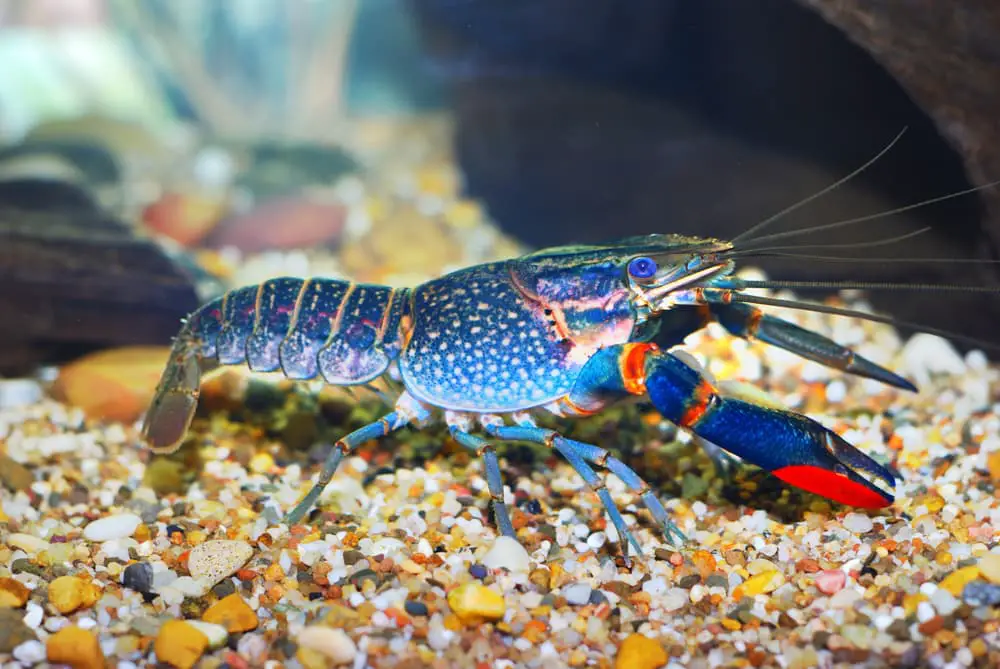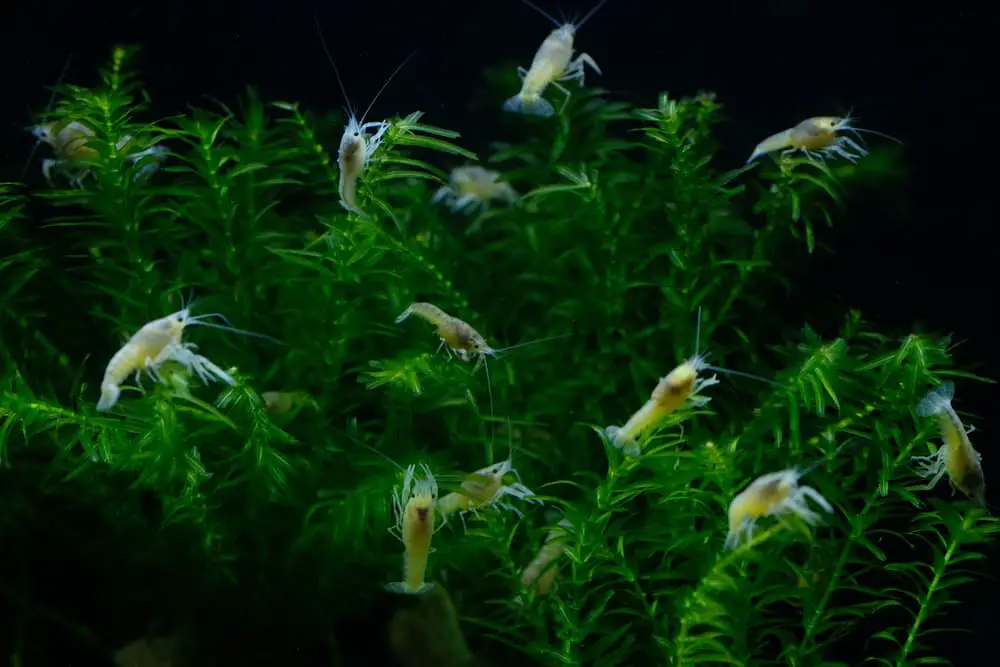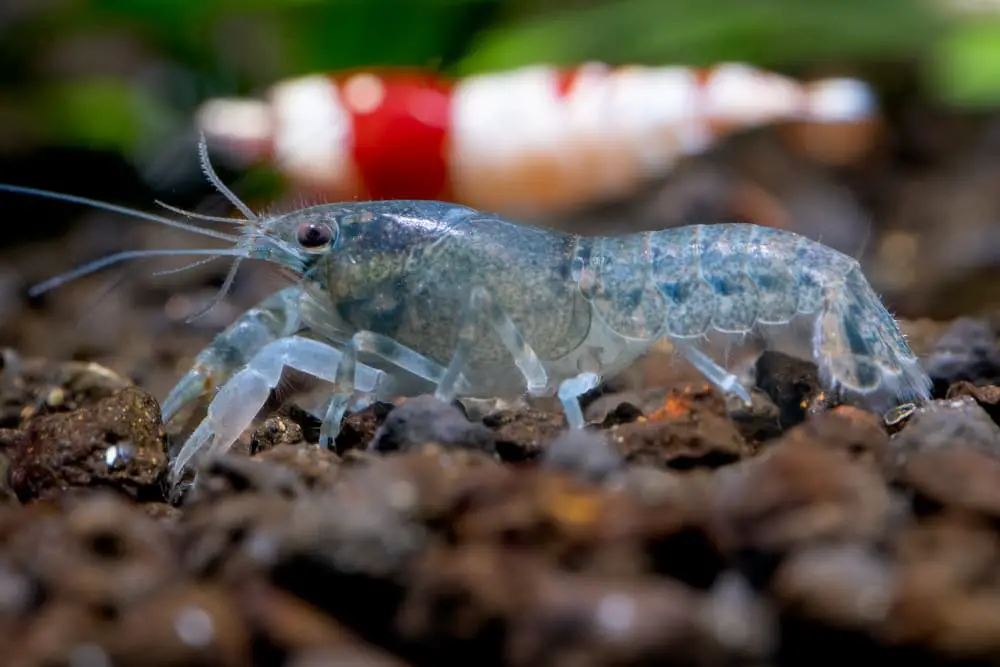Yes, crayfish can eat shrimp. Crayfish are omnivorous and opportunistic feeders, meaning they can consume a variety of foods, including small invertebrates like shrimp. However, the likelihood of a crayfish preying on shrimp can depend on factors such as the species of crayfish and shrimp, their sizes, and the conditions of their environment.
Hello there, fellow aquarium enthusiast! I’m your friendly guide to the world of shrimp and crayfish cohabitation. Now, you might be wondering, “Do crayfish eat shrimp?” Well, you’re about to dive into the nitty-gritty of this intriguing question. As someone who’s spent countless hours observing the behavior of these fascinating aquatic creatures, I can tell you that the answer isn’t as straightforward as you might think. It’s a bit like asking if a cat likes water – some do, some don’t. So, buckle up, and let’s embark on this underwater journey together.
The Dietary Habits of Crayfish
Crayfish, also known as crawfish or crawdads, are fascinating creatures with a diet as diverse as their global habitats. They are omnivorous by nature, which means they consume both plant and animal matter. This dietary flexibility allows them to thrive in a variety of environments, from freshwater streams to home aquariums.
In the wild, crayfish are opportunistic feeders. They primarily feed on decaying plant matter (detritus) and algae, which they scavenge from the bottom of their aquatic habitats. This makes them excellent cleaners, helping to maintain the balance of their ecosystems by breaking down organic material.
However, their diet isn’t limited to plant matter. Crayfish are also known to consume a variety of animal matter, including insects, snails, small fish, and yes, even shrimp. Their strong claws allow them to catch and handle their prey effectively.
In captivity, crayfish maintain their omnivorous diet. Aquarists often feed them a balanced diet of vegetables, fish food pellets, and occasional protein sources such as brine shrimp or bloodworms. It’s important to note that while crayfish can eat shrimp, it’s not a necessary part of their diet, especially in a controlled environment like an aquarium.
pellets, and occasional protein sources such as brine shrimp or bloodworms. It’s important to note that while crayfish can eat shrimp, it’s not a necessary part of their diet, especially in a controlled environment like an aquarium.
Understanding the dietary habits of crayfish is crucial for anyone considering adding them to their aquarium, especially if other smaller creatures, like shrimp, are present. It’s always a good idea to monitor their behavior and adjust their diet as needed to ensure a healthy and harmonious aquatic environment.

The Role of Size and Species in Crayfish-Shrimp Interactions
When it comes to the interactions between crayfish and shrimp, size and species play significant roles. These factors can influence whether a peaceful coexistence is possible or if the crayfish might see its tank mates as a potential meal.
Size Matters
In the underwater world, size often dictates who eats whom. Larger crayfish are more likely to see smaller shrimp as potential prey. On the other hand, if the shrimp are of comparable size or larger, the crayfish are less likely to attempt predation. It’s important to remember that crayfish have powerful claws, which they can use to catch and handle their prey. Therefore, even if a shrimp is slightly larger, it might still be at risk if the crayfish is particularly aggressive.
Species Specifics
There are hundreds of species of crayfish and shrimp, each with their unique behaviors and characteristics. Some crayfish species are more aggressive and more likely to prey on shrimp. For instance, the red swamp crayfish is known for its aggressive behavior and would pose a significant threat to shrimp in the same tank.
Conversely, some shrimp species are better equipped to share a tank with crayfish. For example, ghost shrimp are fast and agile, which can help them evade crayfish. However, even the quickest shrimp might not be entirely safe in a tank with a determined crayfish.
When considering adding crayfish and shrimp to the same aquarium, it’s crucial to research the specific species you’re interested in. Understanding their behaviors, dietary preferences, and compatibility with other species can help ensure a more peaceful cohabitation.

Environmental Factors Influencing Crayfish Behavior
The behavior of crayfish, including their interactions with other aquatic creatures like shrimp, can be significantly influenced by various environmental factors. These factors include the availability of food, the size and complexity of their habitat, and the overall population density within the tank.
Food Availability
The availability of food in the tank plays a crucial role in determining whether crayfish will resort to predation. If there’s an ample supply of suitable food, crayfish are less likely to view their tank mates as potential meals. However, if food becomes scarce, crayfish may become more aggressive in their search for sustenance, increasing the risk to smaller or slower tank mates like shrimp.
Habitat Size and Complexity
The size and complexity of the tank environment can also influence crayfish behavior. A small, simple tank offers few places for shrimp or other potential prey to hide, making them more vulnerable to predation. On the other hand, a larger tank with plenty of hiding spots, such as caves, rocks, and dense plantings, can provide shrimp with the shelter they need to evade crayfish.
Population Density
The number of creatures in the tank, or population density, can also impact crayfish behavior. A crowded tank can lead to increased competition for resources, including food and hiding spots. This competition can trigger aggressive behavior in crayfish, potentially leading to increased predation. Conversely, a tank with a balanced population can help maintain more peaceful interactions.

Strategies for Keeping Shrimp Safe in a Crayfish-Inhabited Aquarium
Keeping shrimp safe in a crayfish-inhabited aquarium can be a challenging task due to the natural predatory instincts of crayfish. However, with careful planning and management, it’s possible to create an environment where both can coexist. Here are some strategies to consider:
Provide Plenty of Hiding Spots
One of the most effective ways to protect shrimp in a crayfish-inhabited aquarium is to provide plenty of hiding spots. This can be achieved by adding live plants, rocks, driftwood, and other aquarium-safe decorations. These hiding spots give shrimp a place to retreat when they feel threatened.
Maintain a Balanced Diet for Crayfish
Ensuring that your crayfish are well-fed can reduce their tendency to hunt. Feed them a balanced diet that includes a variety of foods, such as fish pellets, vegetables, and occasional protein sources. Remember, a hungry crayfish is more likely to turn to its tank mates for food.
Choose Larger, Faster Shrimp Species
If you’re set on having both crayfish and shrimp in the same tank, consider choosing shrimp species that are larger and faster. Larger shrimp are less likely to be seen as prey, and faster shrimp have a better chance of escaping if pursued.
Monitor Your Tank Regularly
Regular monitoring of your tank can help you spot any signs of aggression early on. If you notice your crayfish chasing or attempting to catch shrimp, it might be time to reconsider their cohabitation.
Consider Separate Tanks
If all else fails, the safest strategy might be to keep your crayfish and shrimp in separate tanks. This ensures the safety of the shrimp while allowing the crayfish to behave naturally without causing harm to other tank inhabitants.
Remember, every crayfish and shrimp species is unique, and what works for one might not work for another. Always do your research and be prepared to adjust your approach as needed.

The Impact of Crayfish Predation on Shrimp Populations
Crayfish predation can have a significant impact on shrimp populations, particularly in a confined environment like an aquarium. This impact can manifest in several ways, affecting not only the number of shrimp but also their behavior and overall health.
Population Decline
The most immediate and noticeable impact of crayfish predation is a decline in the shrimp population. Crayfish are skilled hunters, and in a tank environment, shrimp often have limited places to hide. This situation can lead to a rapid decrease in shrimp numbers, especially if the crayfish are large or particularly aggressive.
Behavioral Changes
The presence of a predator like a crayfish can also lead to changes in shrimp behavior. Shrimp may become more nocturnal, hiding during the day when crayfish are most active, and only emerging to feed at night. This change in behavior can make it harder for aquarists to observe and care for their shrimp.
Stress and Health Issues
Predation pressure can lead to increased stress levels in shrimp, which can in turn lead to health issues. Stress can weaken the immune system of shrimp, making them more susceptible to disease. Additionally, constant hiding and evasion can lead to decreased feeding, potentially resulting in malnutrition over time.
Breeding Disruption
Finally, crayfish predation can disrupt the breeding of shrimp. Stress and population decline can lead to fewer successful matings. Additionally, crayfish may eat shrimp eggs and larvae, further reducing the number of new shrimp.

Feeding Crayfish
While crayfish are capable of eating shrimp, it’s not necessary to include shrimp in their diet, especially in a home aquarium setting. There are many other nutritious and more sustainable options that can keep your crayfish healthy and well-fed. Here are some alternatives:
Fish Pellets or Wafers
Fish pellets or wafers are a staple in many crayfish diets. They are nutritionally balanced and easy to feed. They sink to the bottom of the tank, making them accessible for the bottom-dwelling crayfish.
Vegetables
Crayfish can eat a variety of vegetables, which can be a great source of vitamins and fiber. Options include peas, carrots, spinach, and zucchini. It’s best to blanch the vegetables before feeding to soften them, making it easier for the crayfish to eat.
Live or Frozen Foods
Crayfish can also eat a variety of live or frozen foods, such as bloodworms, brine shrimp, or daphnia. These foods can provide a source of protein and can stimulate the crayfish’s natural hunting instincts.
Aquarium Plants
Some species of crayfish will also eat aquarium plants. While this can sometimes be a nuisance for aquarists trying to maintain a planted tank, it can also be a good source of nutrition for the crayfish.
Conclusion
In the fascinating world of aquarium keeping, understanding the dynamics between different species is crucial. Yes, crayfish can eat shrimp, but this doesn’t mean they must coexist in the same tank or that shrimp should be a primary food source for crayfish. By considering factors such as the size and species of your crayfish and shrimp, the environmental conditions of your tank, and by providing ample hiding spots and a balanced diet, you can create a harmonious aquatic environment. Remember, each situation is unique, so it’s essential to monitor your tank regularly and adjust as necessary.
If you ever find yourself in need of assistance or have any questions, please don’t hesitate to reach out. I’m here to help guide you through your shrimp and crayfish keeping journey.
Happy Shrimp Keeping!
Frequently Asked Questions
Q. Can crayfish and shrimp coexist in the same aquarium?
A. While it is possible for crayfish and shrimp to share an aquarium, it’s not generally advised due to the crayfish’s natural predatory instincts. If you choose to have them in the same tank, providing an abundance of hiding spots and closely monitoring their interactions are essential.
Q. Is it true that larger crayfish are too slow to catch shrimp but smaller crayfish can?
A. Yes, generally larger crayfish may be slower and less likely to catch agile shrimp. However, smaller, faster crayfish may pose a more significant threat. Keep in mind that this can depend on the species and individual traits, and some larger crayfish can still manage to catch shrimp.
Q. What type of diet is best for my crayfish if I decide not to feed them shrimp?
A. A balanced diet for crayfish can include fish pellets or wafers, various vegetables like peas and carrots, and occasional live or frozen foods such as bloodworms or brine shrimp. Some crayfish may also eat aquarium plants.
Q. Can crayfish and shrimp coexist in the same aquarium?
A. While it is possible for crayfish and shrimp to share an aquarium, it’s not generally advised due to the crayfish’s natural predatory instincts. If you choose to have them in the same tank, providing an abundance of hiding spots and closely monitoring their interactions are essential.
Q. What type of diet is best for my crayfish if I decide not to feed them shrimp?
A. A balanced diet for crayfish can include fish pellets or wafers, various vegetables like peas and carrots, and occasional live or frozen foods such as bloodworms or brine shrimp. Some crayfish may also eat aquarium plants.
Q. How can I ensure my shrimp’s safety from crayfish in a shared aquarium environment?
A. Making sure your aquarium has plenty of hiding spots through live plants, rocks, and other safe aquarium decorations can offer places for shrimp to retreat. Additionally, maintaining a well-fed crayfish can reduce their hunting instincts.
Q. Are there specific crayfish species that are less likely to prey on shrimp?
A. Crayfish behaviors can differ significantly among species, and while some may be less aggressive or predatory than others, remember that all crayfish are opportunistic feeders and may eat shrimp if given a chance.
Q. Are there certain shrimp species better suited to living with crayfish?
A. Shrimp species that are larger and faster may have better survival rates in an aquarium with crayfish. However, no shrimp species is completely safe, especially with large or particularly aggressive crayfish.
Q. What environmental factors can influence the predatory behavior of crayfish?
A. Factors like the availability of food, the complexity and size of the tank environment, and the population density within the tank can significantly influence crayfish behavior.
Q. How can I minimize the stress for my shrimp in a shared tank with crayfish?
A. Apart from providing plenty of hiding spots, ensuring a well-fed crayfish, and considering larger and faster shrimp species, regular monitoring is important to detect any signs of aggression early on.
Q. How can crayfish predation affect the overall health and behavior of my shrimp?
A. Continuous predatory pressure can increase stress levels in shrimp, possibly leading to a weakened immune system and increased susceptibility to disease. Additionally, crayfish predation can disrupt the breeding of shrimp and cause significant behavioral changes.
Q. Can crayfish cause a decline in my shrimp population?
A. Yes, crayfish are skilled hunters and in a confined environment like an aquarium, there might be limited hiding places for shrimp, leading to a decline in their numbers.
Q. What precautions should I take before deciding to house crayfish and shrimp together?
A. It’s important to conduct research about the specific species you’re interested in, their behaviors, dietary preferences, and compatibility. Additionally, setting up a proper environment with ample hiding spots and ensuring a balanced diet for your crayfish are essential. Regular monitoring and being prepared to separate the species if aggression occurs are also important steps.
